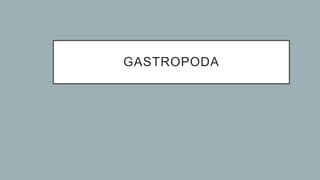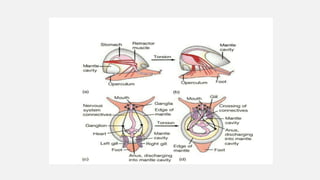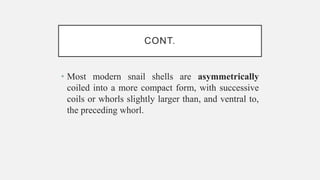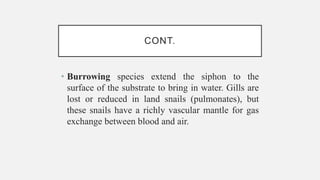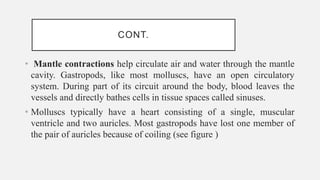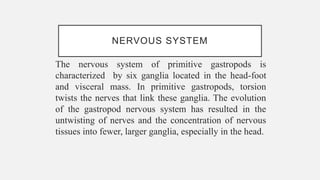The document summarizes key aspects of gastropods (snails and slugs):
- Gastropods undergo a process called torsion in development where the visceral mass and mantle cavity twist 180 degrees, positioning organs and openings optimally for protection and function.
- Most gastropod shells coil asymmetrically into a compact form to accommodate internal organs.
- Gastropods use their muscular foot for locomotion and have various feeding, digestive, gas exchange, sensory, excretory and reproductive systems adapted for their habitats.
- With over 35,000 species, gastropods occupy a wide range of marine, freshwater and terrestrial habitats and fill important ecological roles.
